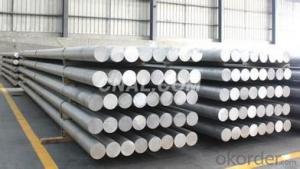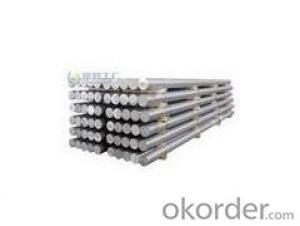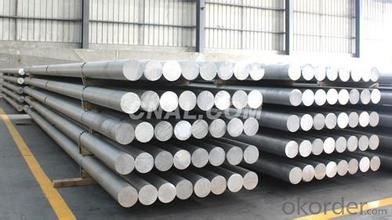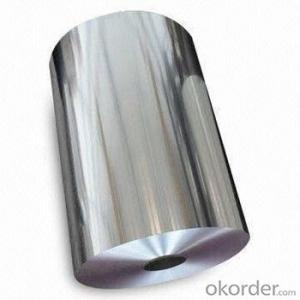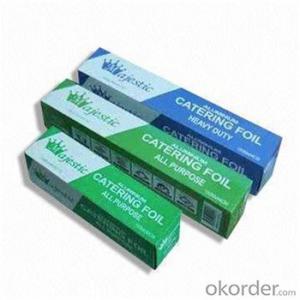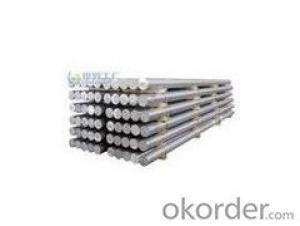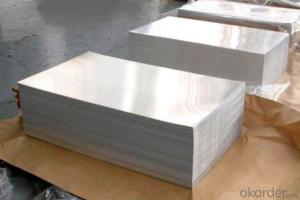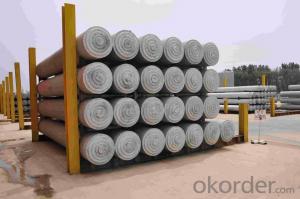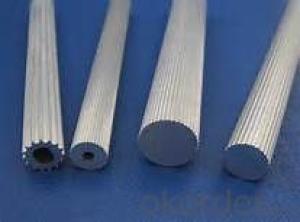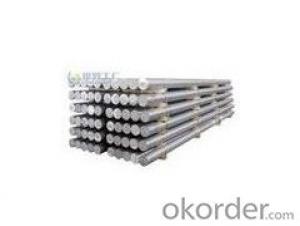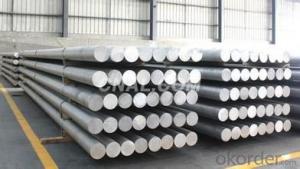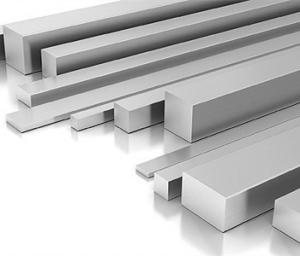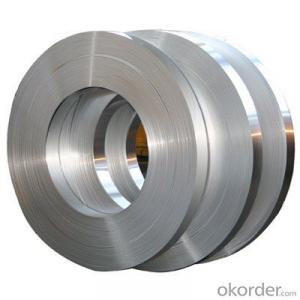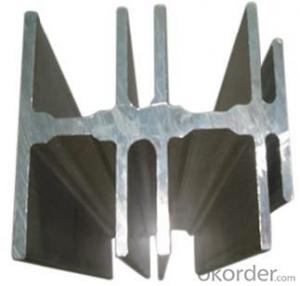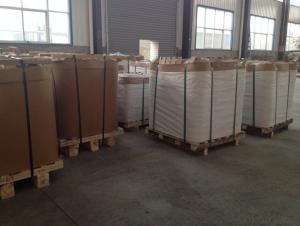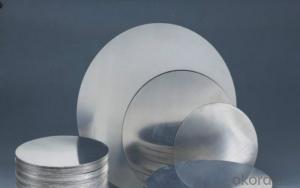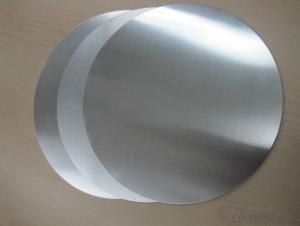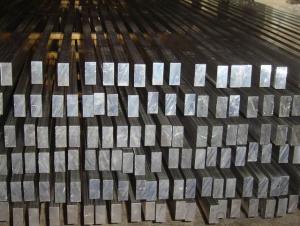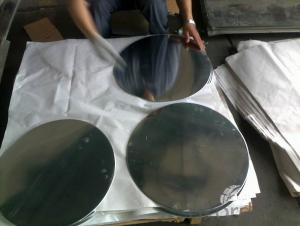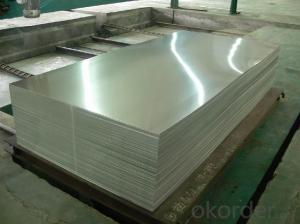Extruded Aluminum Bars for Any Use
- Loading Port:
- China Main Port
- Payment Terms:
- TT OR LC
- Min Order Qty:
- -
- Supply Capability:
- -
OKorder Service Pledge
OKorder Financial Service
You Might Also Like
Aluminium foil acts as a total barrier to light and oxygen (which cause fats to oxidise or become rancid), odours and flavours, moistness, and germs, it is used broadly in food and pharmaceutical packaging. The purpose of aluminium is to make long-life packs (aseptic processing|aseptic packaging) for drinks and dairy goods, which allows storing without refrigeration. Aluminium foil containers and trays are used to bake pies and to pack takeaway meals, ready snacks and long life pet foods.
Aluminium foil is widely sold into the consumer market, often in rolls of 500 mm (20 in) width and several metres in length.It is used for wrapping food in order to preserve it, for example, when storing leftover food in a refrigerator (where it serves the additional purpose of preventing odour exchange), when taking sandwiches on a journey, or when selling some kinds of take-away or fast food. Tex-Mex restaurants in the United States, for example, typically provide take-away burritos wrapped in aluminium foil.
Aluminium foils thicker than 25 μm (1 mil) are impermeable to oxygen and water. Foils thinner than this become slightly permeable due to minute pinholes caused by the production process.
Aluminium foil has a shiny side and a matte side. The shiny side is produced when the aluminium is rolled during the final pass. It is difficult to produce rollers with a gap fine enough to cope with the foil gauge, therefore, for the final pass, two sheets are rolled at the same time, doubling the thickness of the gauge at entry to the rollers. When the sheets are later separated, the inside surface is dull, and the outside surface is shiny. This difference in the finish has led to the perception that favouring a side has an effect when cooking. While many believe that the different properties keep heat out when wrapped with the shiny finish facing out, and keep heat in with the shiny finish facing inwards, the actual difference is imperceptible without instrumentation.The reflectivity of bright aluminium foil is 88% while dull embossed foil is about 80%.
We provide a full range of precision aluminum strip for almost any application. We produce aluminum strip in a wide variety of alloys, including clad composites. Our aluminum strip can be produced in standard dimensions or custom made to your special requirements. We produce both imperial and metric units. We manufacture in compliance with the main international specifications, and tighter tolerances or custom tempers are available upon request. We offer various surface conditions, custom finishes (painting, anodizing, embossing), special processing, and multiple packaging options to meet our customer's unique requirements. The following is a summary of our capabilities.
Manufactured in compliance with the main international specifications and standards, including: Aluminum Association, ASTM, EN, and DIN.
We can also manufacture in compliance with other international standards including:ASME, SAE, AMS, AWS, FED, MIL, QQ, ISO, BS, AFNOR, JIS and GOST.
Manufactured in compliance with the main international specifications and standards.
Tighter tolerances are available upon request.
Aluminium (or aluminum; see spelling differences) is a chemical element in the boron group with symbol Al and atomic number 13. It is a silvery white, soft, ductile metal. Aluminium is the third most abundant element (after oxygen and silicon), and the most abundant metal in the Earth's crust. It makes up about 8% by weight of the Earth's solid surface. Aluminium metal is so chemically reactive that native specimens are rare and limited to extreme reducing environments. Instead, it is found combined in over 270 different minerals.The chief ore of aluminium is bauxite.
Aluminium is remarkable for the metal's low density and for its ability to resist corrosion due to the phenomenon of passivation. Structural components made from aluminium and its alloys are vital to the aerospace industry and are important in other areas of transportation and structural materials. The most useful compounds of aluminium, at least on a weight basis, are the oxides and sulfates.
Despite its prevalence in the environment, no known form of life uses aluminium salts metabolically. In keeping with its pervasiveness, aluminium is well tolerated by plants and animals. Owing to their prevalence, potential beneficial (or otherwise) biological roles of aluminium compounds are of continuing interest.
The earliest citation given in the Oxford English Dictionary for any word used as a name for this element is alumium, which British chemist and inventor Humphry Davy employed in 1808 for the metal he was trying to isolate electrolytically from the mineral alumina. The citation is from the journal Philosophical Transactions of the Royal Society of London: "Had I been so fortunate as to have obtained more certain evidences on this subject, and to have procured the metallic substances I was in search of, I should have proposed for them the names of silicium, alumium, zirconium, and glucium."
Davy settled on aluminum by the time he published his 1812 book Chemical Philosophy: "This substance appears to contain a peculiar metal, but as yet Aluminum has not been obtained in a perfectly free state, though alloys of it with other metalline substances have been procured sufficiently distinct to indicate the probable nature of alumina."[69] But the same year, an anonymous contributor to the Quarterly Review, a British political-literary journal, in a review of Davy's book, objected to aluminum and proposed the name aluminium, "for so we shall take the liberty of writing the word, in preference to aluminum, which has a less classical sound."
The -ium suffix conformed to the precedent set in other newly discovered elements of the time: potassium, sodium, magnesium, calcium, and strontium (all of which Davy isolated himself). Nevertheless, -um spellings for elements were not unknown at the time, as for example platinum, known to Europeans since the 16th century, molybdenum, discovered in 1778, and tantalum, discovered in 1802. The -um suffix is consistent with the universal spelling alumina for the oxide (as opposed to aluminia), as lanthana is the oxide of lanthanum, and magnesia, ceria, and thoria are the oxides of magnesium, cerium, and thorium respectively.
The aluminum spelling is used in the Webster's Dictionary of 1828. In his advertising handbill for his new electrolytic method of producing the metal in 1892, Charles Martin Hall used the -um spelling, despite his constant use of the -ium spelling in all the patents[58] he filed between 1886 and 1903. It has consequently been suggested[by whom?] that the spelling reflects an easier-to-pronounce word with one fewer syllable, or that the spelling on the flyer was a mistake.[citation needed] Hall's domination of production of the metal ensured that aluminum became the standard English spelling in North America.
- Q: I know that aluminum rod forming is roughly after melting, casting slag mixing, so several links, only for the specific details of the process (i.e. work instruction) is not very clear, I hope this familiar person can detailed, thank you!
- After smelting, is there a component test to adjust the composition?
- Q: How do we cast the 7 series aluminum bars?
- 3, casting: molten aluminum liquid, in a certain casting process conditions, through the deep casting system, cooling casting into various specifications of the round casting rod.Types of aluminum bars:Is a type of aluminum rod, aluminum generally according to how many elements of its aluminum rod containing will divide the following types, and different types of aluminum rods show their characteristics and application fields of the same
- Q: What is the density of aluminium rods?
- Weight = mass *g= density x volume *gVolume = (radius ^2) *3.14* length= (diameter ^2/4) *3.14* length= (0.03^2/4) *3.14*1=0.0007065m^3So, weight =2.71*0.0007065*9.81=0.018782373kg
- Q: Hello! Ask, 6061, after the uniform treatment of aluminum rods, extruded out of the profile strength (hardness) will be affected?
- 6061 aluminum rod is heat treatment, can strengthen the alloy, has good formability, weldability, machinability, and at the same time with moderate strength, after annealing can still maintain good operability.
- Q: Now processing D8 long 300 aluminum rod, with instrument car processing, sleeve will pinch aluminum rod, is there any good way or suggestion? At present we do with bakelite collet, but life is not enough. Please master suggestions, thank you!
- the problem is that the material is most suitable? Copper will leave traces on the surface, and after a long processing time, the nylon will soften and become invalid. The elastic collet is probably not very realistic, because it is the instrument lathe, structure is simple, a thousand dollars.
- Q: Synchronous wheel aluminum bar
- Synchronous pulley materials are commonly used in gray iron, 45# steel, aluminum alloy, copper or engineering plastics, etc.. 2A12 aluminum alloy is common in aluminum alloy.
- Q: In mechanical drawings, what is the technical requirement of an aluminum bar "delivery status: CS"?
- When ordering, the delivery status should be marked in the contract.Status of aluminum alloys:R: hot working stateM: annealed conditionY: work hardening stateC: quenching conditionCZ: quenching and natural agingCZY: quenching, natural aging, cold working stateCS: quenching and artificial aging conditionCSY: quenching, artificial aging, cold working stateY2: semi hard stateRCS (T5): air cooling and manual aging
- Q: How high is the aluminum bar heated until it is bent?
- Look at this change: a hub is a kind of precision forging, precision forging, aluminum bar heating by high-end technology of spinning and heat treatment and NC machining, and then after the product inspection process to eliminate defects strictly, finally produce high quality precision forging Aluminum Alloy hub.
- Q: I would like to know the benefits of the aluminum bar homogeneous process and some related knowledge, know the master, please let me know, thank you!
- Homogenizing furnace is an indispensable equipment for improving the quality of aluminum products. After homogenizing the aluminum bars, the internal components (Mg2Si and Fe) are uniform.
- Q: When I cut the aluminum bar with a saw blade, I haven't cut 5 of them yet. The teeth on the saw blade all stick to the aluminum chip and can not be cutDo not know what the reason, and who knows, help answer!Hurry up... Thank you!
- Add:If you cut the aluminum bar, the cutting surface needs to be higherIt is recommended to buy better alloy saw bladesJapan and big room, and Italy Rui invincible, Germany AKEDomestic made lions and so onGenerally good alloy saw blade 500mm diameter is 1000-1800So in the case of non essential advice to buy high-speed hacksaw blade
Send your message to us
Extruded Aluminum Bars for Any Use
- Loading Port:
- China Main Port
- Payment Terms:
- TT OR LC
- Min Order Qty:
- -
- Supply Capability:
- -
OKorder Service Pledge
OKorder Financial Service
Similar products
Hot products
Hot Searches
Related keywords
